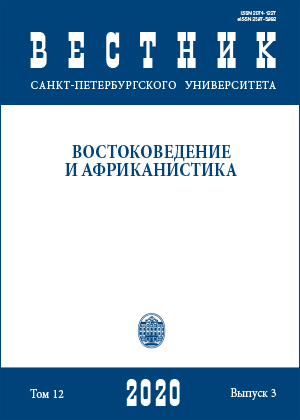Written at the Service of Oral: Topolect Literature Movement in Hong Kong
DOI:
https://doi.org/10.21638/spbu13.2020.307Abstract
The article describes the history of the Topolect Literature Movement (TLM), which developed in Hong Kong in the 1940s, and analyzes its typological features. TLM was one of the most radical projects implemented to replace writing in the national standard language based on northern dialects with writing in the local language variety (Cantonese / Yue). This variety was a non-northern idiom that performed the function of the L-language in diglossia. TLM authors did not try to break the connection between the written language and its oral form: many, primarily poetic, texts were somehow intended for public performance; in other types of texts, a close connection with the spoken language was supported by the strong presence of a narrator. Texts were recorded using Chinese characters (a standard character with an identical / similar reading was used to write down a topolect morpheme, or a character using it as a phonetic element indicating reading was created). The final failure of TLM, in addition to purely political factors, can be explained by a shift in attention from the urban literate audience to peasants. This resulted from the attitudes of the Chinese Communist Party that functioned in a rural environment, very different from the urban one, where TLM writers who sympathized with leftist ideas actually lived and worked. The prevalence of traditional poetic forms reflected a bias towards the traditional culture of the rural community. The willingness to focus on a local audience, even to the detriment of the national language unity, created a potential conflict with the aspirations of most of the Chinese intellectual elite who were determined to solve the problem of nation-building. Nevertheless, TLM serves as a unique example of the rapid development of writing in one of the Chinese topolects in the checkered twentieth century.
Keywords:
Cantonese (Yue), Chinese language, Chinese poetry, written language, spoken language, vernacular
Downloads
References
Downloads
Published
How to Cite
Issue
Section
License
Articles of "Vestnik of Saint Petersburg University. Asian and African Studies" are open access distributed under the terms of the License Agreement with Saint Petersburg State University, which permits to the authors unrestricted distribution and self-archiving free of charge.





